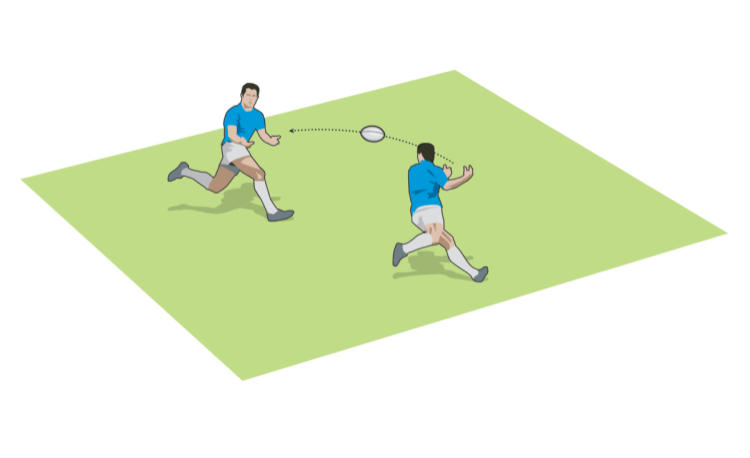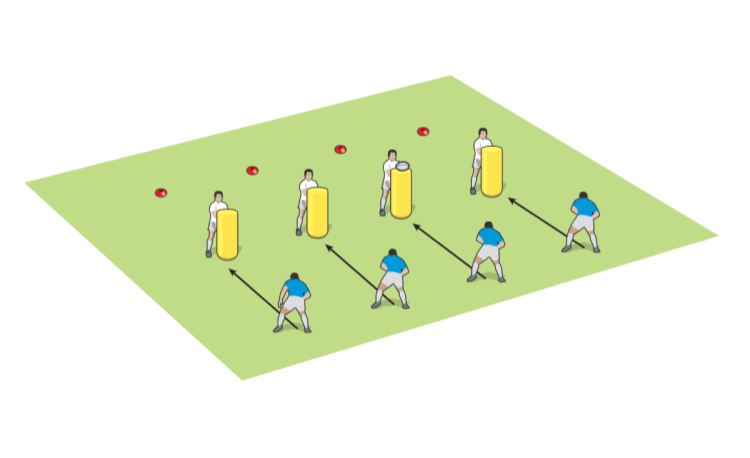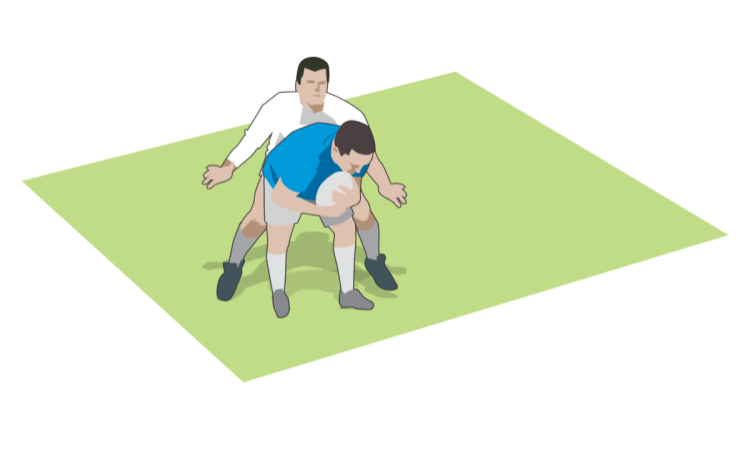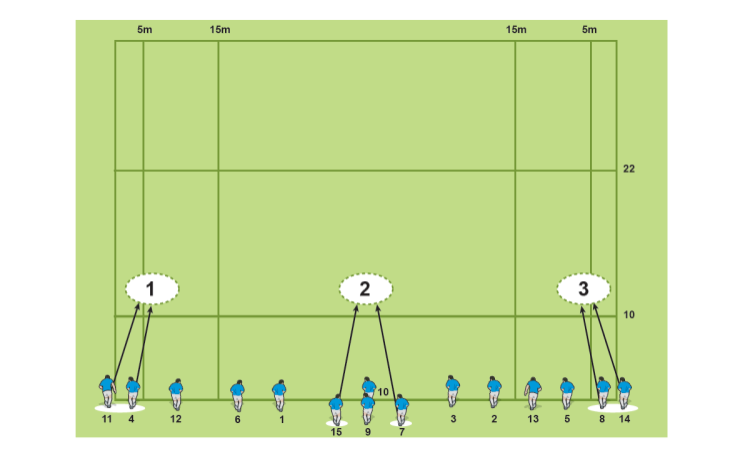You are viewing
1 of your 2 free articles
Kick switches
Use our two simple tactics to pull defences one way and then kick the other to surprise them and give your chasers a good chance of gathering the kick unopposed.
Use our two simple tactics to pull defences one way and then kick the other to surprise them and give your chasers a good chance of gathering the kick unopposed.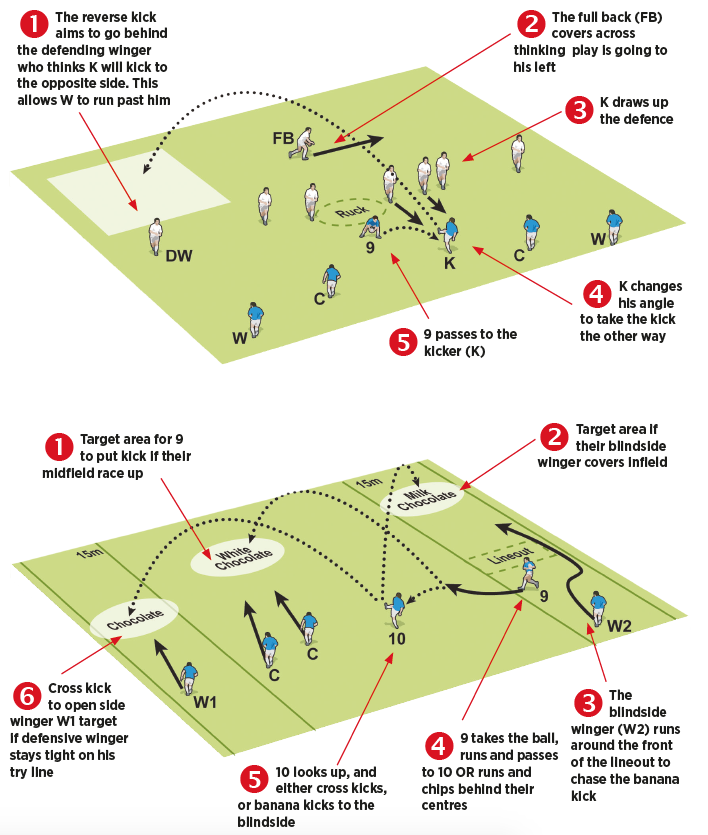
Defences have to gamble on what areas of the pitch they need to cover. They will shorten the odds by trying to read the movement of potential kickers. You can changes the odds in favour of the attacking side with these two tried and tested ploys.
The reverse
See picture 1: From a ruck near the middle of the pitch, the defensive full back (FB) tends to line up in the backfield opposite the kicker (K).
The defensive winger (DW) will be
back, while the other winger might be up or back.
When the attacking team receives the ball going right, K takes the ball from 9, shimmies, then kicks in the opposite direction – to the left.
The defensive full back will have moved to his right to follow the pass. The defence will have moved up and right too. Now here is the clever bit – DW, who is on the side you are kicking to, will probably switch off for a second when he sees the ball go away from him initially. That gives your winger on that side the chance to scoot past him and successfully chase the ball.
Chocolate kicks
Make your kicks all the sweeter by naming them after chocolate – and get players to shout what sort they will use either at a set piece or once they have got the ball and have had a chance to react to the defence.
You could name your kicks in the following way:
i) Chocolate - a cross kick to your winger.
ii) Milk chocolate – a banana kick over and behind the lineout.
iii) White chocolate - a chip by your 9 running from the lineout.
See picture 2: To practice chocolate kicks, the open side winger (W1) stands very wide. When 10 receives the ball (from 9 running) from the lineout and then passing, he shapes to cross kick to his open side winger (W1).
If the defensive winger is out of position (too tight to his own try line) then 10 kicks into the space (“chocolate”).
However, he can also kick with the outside of his boot back over into the space behind the lineout (“milk chocolate”). The blindside winger (W2) races around the front of the lineout to take the ball as quite often the defending winger covers across and is out of position.
Finally, the 9 might take the ball and chip in behind the opposition centres (“white chocolate”).
Related Files
Newsletter Sign Up
Coaches Testimonials

Gerald Kearney, Downtown Las Vegas Soccer Club

Paul Butler, Florida, USA

Rick Shields, Springboro, USA

Tony Green, Pierrefonds Titans, Quebec, Canada
Subscribe Today
Be a more effective, more successful rugby coach
In a recent survey 89% of subscribers said Rugby Coach Weekly makes them more confident, 91% said Rugby Coach Weekly makes them a more effective coach and 93% said Rugby Coach Weekly makes them more inspired.
Get Weekly Inspiration
All the latest techniques and approaches
Rugby Coach Weekly offers proven and easy to use rugby drills, coaching sessions, practice plans, small-sided games, warm-ups, training tips and advice.
We've been at the cutting edge of rugby coaching since we launched in 2005, creating resources for the grassroots youth coach, following best practice from around the world and insights from the professional game.





